Inhalt
Salamanders lived with the dinosaurs!
 Please visit our website, www.garethstevens.com. For a free color catalog of all our high-quality books, call toll free 1-800-542-2595 or fax 1-877-542-2596.Cataloging-in-Publication Data
Please visit our website, www.garethstevens.com. For a free color catalog of all our high-quality books, call toll free 1-800-542-2595 or fax 1-877-542-2596.Cataloging-in-Publication Data Names: Niver, Heather Moore. Title: Salamanders lived with the dinosaurs! / Heather Moore Niver. Description: New York : Gareth Stevens Publishing, 2017. | Series: Living with the dinosaurs | Includes index. Identifiers: ISBN 9781482456615 (pbk.) | ISBN 9781482456639 (library bound) | ISBN 9781482456622 (6 pack) Subjects: LCSH: Salamanders--Juvenile literature.
Classification: LCC QL668.C2 N58 2017 | DDC 597.85--dc23 First Edition Published in 2017 by Gareth Stevens Publishing 111 East 14th Street, Suite 349 New York, NY 10003 Copyright 2017 Gareth Stevens Publishing Designer: Laura Bowen Editor: Therese Shea Photo credits: Cover, p. (fossil) Ghedoghedo/Wikimedia Commons. All rights reserved. No part of this book may be reproduced in any form without permission in writing from the publisher, except by a reviewer. Printed in the United States of America CPSIA compliance information: Batch #CW17GS: For further information contact Gareth Stevens, New York, New York at 1-800-542-2595. CONTENTS Words in the glossary appear in bold type the first time they are used in the text.
SPOT THE SALAMANDER Salamanders are small creatures you might see on a hike in the woods. You or a friend might even have a pet salamander. If you do, your pet is Salamanders are sometimes mistaken for lizards. However, lizards are reptiles, while salamanders are amphibians. But these amphibians once lived alongside some famous reptiles: dinosaurs! Keep reading to find out how the salamanders of the dinosaur age were similar to and different from those we know today. THE PREHISTORIC WORLD Dinosaurs werent amphibians.
They were reptiles. Modern reptiles usually lay eggs and have skin covered with scales or bony plates. (However, some dinosaurs had feathers!)  THE WORD SALAMANDER COMES FROM AN ANCIENT GREEK WORD MEANING FIRE LIZARD. PEOPLE ONCE MISTAKENLY THOUGHT SALAMANDERS COULD SURVIVE FIRE. TODAYS SALAMANDERS First, its helpful to know about modern salamanders. Salamanders have thin bodies and long tails.
THE WORD SALAMANDER COMES FROM AN ANCIENT GREEK WORD MEANING FIRE LIZARD. PEOPLE ONCE MISTAKENLY THOUGHT SALAMANDERS COULD SURVIVE FIRE. TODAYS SALAMANDERS First, its helpful to know about modern salamanders. Salamanders have thin bodies and long tails.
Theyre amphibians, so most spend part of their life in water and part on land. Like reptiles, theyre also cold-blooded. That means their body . Salamanders can be small. The Tennessee pygmy salamander sometimes only grows to be 1.5 inches (3.8 cm) long. 
 THE LARGEST LIVING SALAMANDER TODAY IS THE CHINESE GIANT SALAMANDER, SHOWN BELOW.
THE LARGEST LIVING SALAMANDER TODAY IS THE CHINESE GIANT SALAMANDER, SHOWN BELOW. 
 THE LARGEST LIVING SALAMANDER TODAY IS THE CHINESE GIANT SALAMANDER, SHOWN BELOW.
THE LARGEST LIVING SALAMANDER TODAY IS THE CHINESE GIANT SALAMANDER, SHOWN BELOW.
JAPANESE GIANT SALAMANDERS ARE ONLY SLIGHTLY SMALLER. ON LAND AND UNDERWATER Scientists think salamanders have to live on land as adults. The hellbender salamander is a bit different. It uses gills to breathe in water for its first 2 years. As adults, hellbenders breathe through their skin! Other species, or kinds, of salamanders breathe through their skin, too.  THE PREHISTORIC WORLD The amphibian Amphibamus (am-fih-BAY-muhs) existed about 300 million years ago.
THE PREHISTORIC WORLD The amphibian Amphibamus (am-fih-BAY-muhs) existed about 300 million years ago.  THE PREHISTORIC WORLD The amphibian Amphibamus (am-fih-BAY-muhs) existed about 300 million years ago.
THE PREHISTORIC WORLD The amphibian Amphibamus (am-fih-BAY-muhs) existed about 300 million years ago.
It lived in wet areas and probably breathed through its skin like some salamanders today.  SALAMANDERS SURVIVE In hot environments, salamanders may find shade or go underground. They dont want their skin to dry outor theyd die! Salamanders can survive cold environments, too. Those in water sometimes stay active under a layer of ice. Others hide in dens. Still others are frozen through the winter! They stop breathing, and their heart stops beating.
SALAMANDERS SURVIVE In hot environments, salamanders may find shade or go underground. They dont want their skin to dry outor theyd die! Salamanders can survive cold environments, too. Those in water sometimes stay active under a layer of ice. Others hide in dens. Still others are frozen through the winter! They stop breathing, and their heart stops beating.
However, in the spring, the ice melts, and they come back to life! This adaptation would have helped salamanders when Earth was very cold. 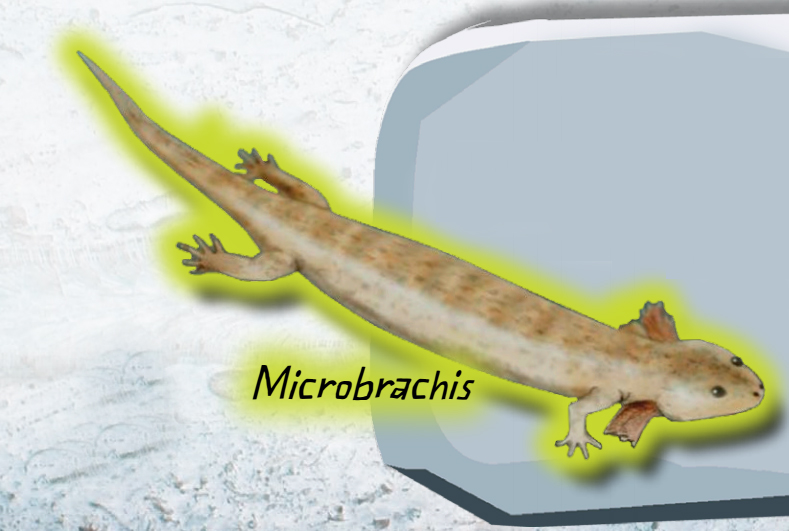 THE PREHISTORIC WORLD Microbrachis was an animal much like a salamander that lived about 300 million years ago. It spent most of its time in water and breathed through gills.
THE PREHISTORIC WORLD Microbrachis was an animal much like a salamander that lived about 300 million years ago. It spent most of its time in water and breathed through gills. 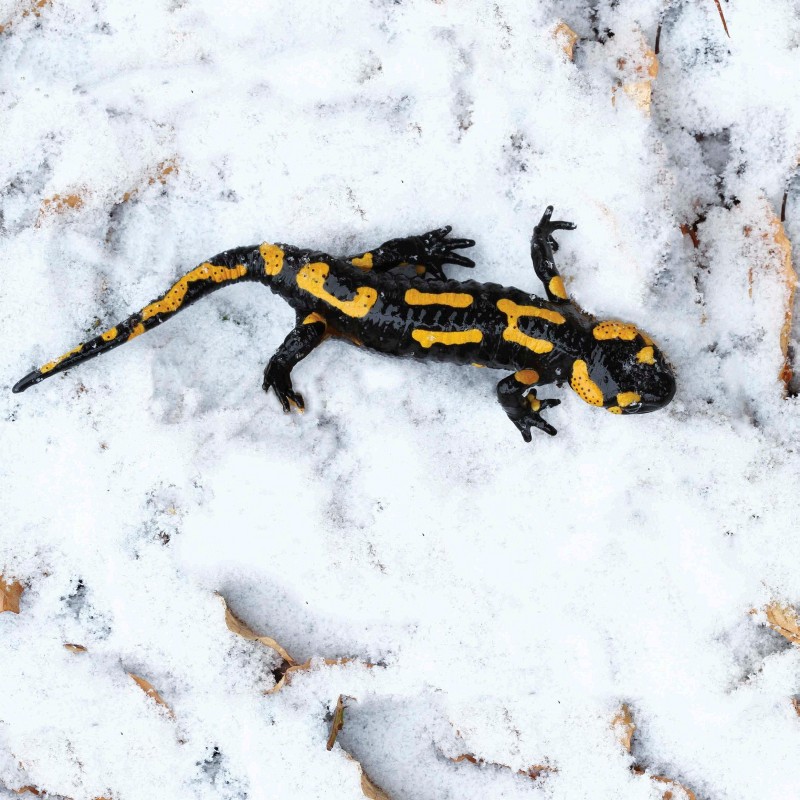 AN ICE AGE IS A PERIOD DURING WHICH TEMPERATURES FALL WORLDWIDE AND LARGE AREAS ARE COVERED WITH ICE. SOME ANIMALS DIED OUT WITH THE START OF THE LAST ICE AGE 2.6 MILLION YEARS AGO, WHILE OTHERS, SUCH AS THE SALAMANDER, SURVIVED. SCARY SKIN! Another adaptation for salamander survival is scary skin.
AN ICE AGE IS A PERIOD DURING WHICH TEMPERATURES FALL WORLDWIDE AND LARGE AREAS ARE COVERED WITH ICE. SOME ANIMALS DIED OUT WITH THE START OF THE LAST ICE AGE 2.6 MILLION YEARS AGO, WHILE OTHERS, SUCH AS THE SALAMANDER, SURVIVED. SCARY SKIN! Another adaptation for salamander survival is scary skin.
If a predator tries to take a bite of a salamander, a body part on the back of the salamanders neck gives off a poison or bad-tasting liquid. The predator often drops the salamander after a taste! Some salamanders have poison in their tail, which they swing at their attacker. This is called a tail lashing. The Jordans salamander gives off a slime that turns into a kind of glue. The glue can trap the attacker for a time! 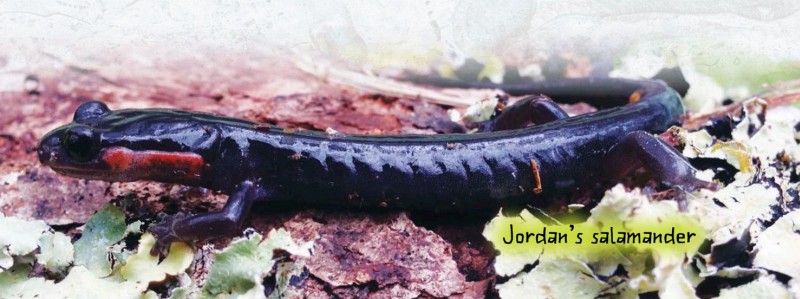
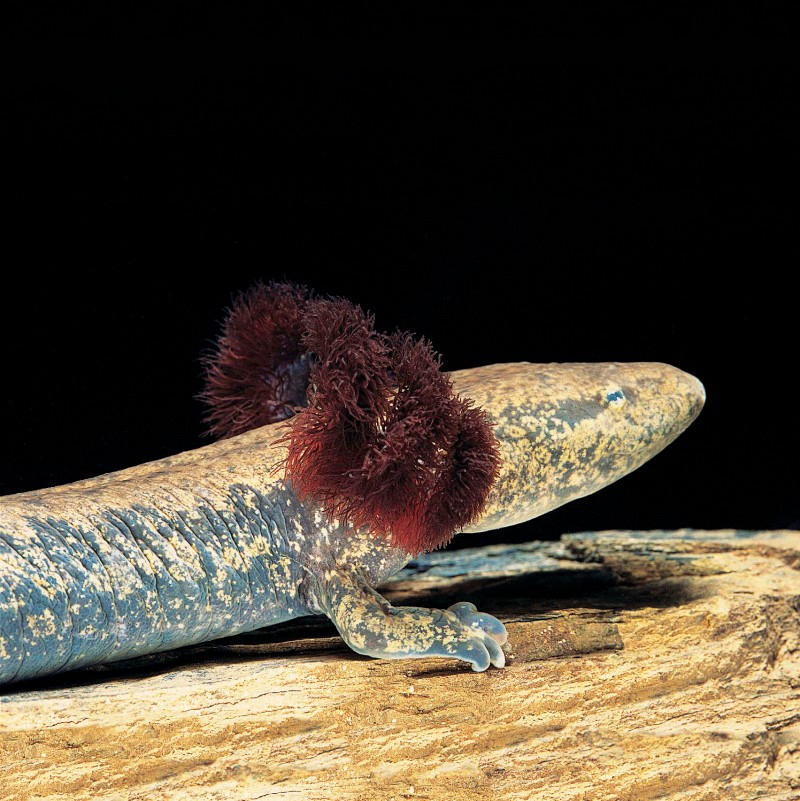 WHEN THE MUDPUPPY SALAMANDER IS IN DANGER, IT CAN MAKE ITS SKIN EXTRA SLIPPERY AND WIGGLE OUT OF A PREDATORS HOLD. IT THEN SWIMS TO SAFETY.
WHEN THE MUDPUPPY SALAMANDER IS IN DANGER, IT CAN MAKE ITS SKIN EXTRA SLIPPERY AND WIGGLE OUT OF A PREDATORS HOLD. IT THEN SWIMS TO SAFETY.
UNLIKE MANY SALAMANDERS, MUDPUPPIES LIVE IN WATER ALL THEIR LIFE. TAKE THE TAIL Salamanders have another special skill. They can grow new body parts. If a predator grabs the tail of a salamander, the tail can separateand continue to move! The moving tail the predator and lets the salamander run to safety. Luckily, the salamander can grow a new tail after a few weeks. It needs its tail for balance.
Salamanders can lose and regrow other body parts, too, such as legs and toes. Being able to regrow body parts helps salamanders survive in environments with many predators. THE PREHISTORIC WORLD Tiktaalik (tihk-TAH-lihk) was a cross between a salamander and a fish. It had fins with simple fingers. It couldnt walk, but could probably make its way onto land. 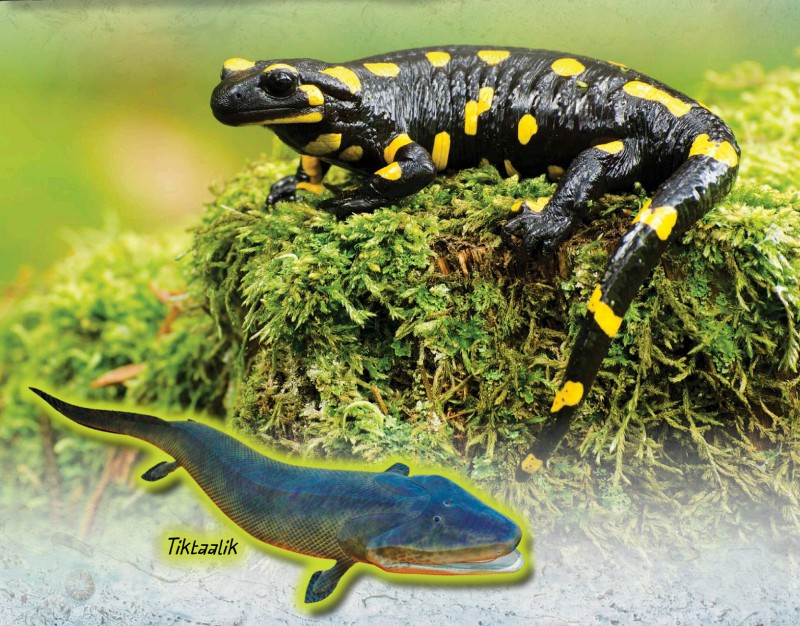

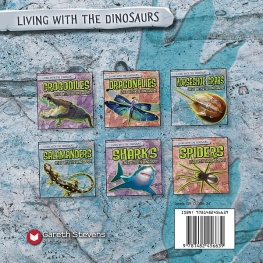


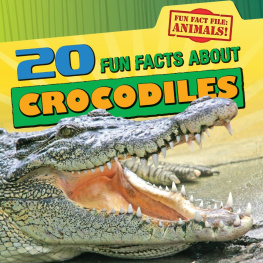




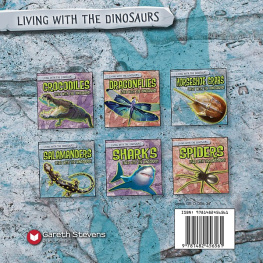
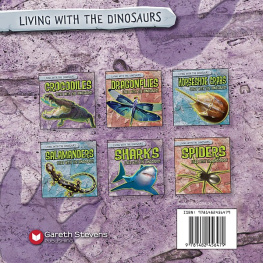

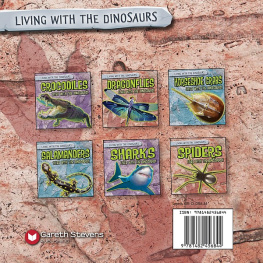

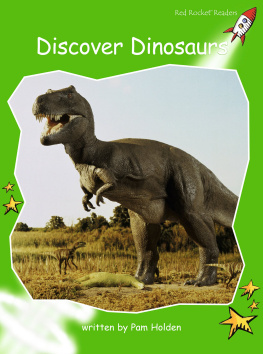
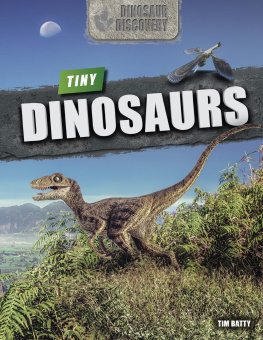


 Please visit our website, www.garethstevens.com. For a free color catalog of all our high-quality books, call toll free 1-800-542-2595 or fax 1-877-542-2596.Cataloging-in-Publication Data Names: Niver, Heather Moore. Title: Salamanders lived with the dinosaurs! / Heather Moore Niver. Description: New York : Gareth Stevens Publishing, 2017. | Series: Living with the dinosaurs | Includes index. Identifiers: ISBN 9781482456615 (pbk.) | ISBN 9781482456639 (library bound) | ISBN 9781482456622 (6 pack) Subjects: LCSH: Salamanders--Juvenile literature.
Please visit our website, www.garethstevens.com. For a free color catalog of all our high-quality books, call toll free 1-800-542-2595 or fax 1-877-542-2596.Cataloging-in-Publication Data Names: Niver, Heather Moore. Title: Salamanders lived with the dinosaurs! / Heather Moore Niver. Description: New York : Gareth Stevens Publishing, 2017. | Series: Living with the dinosaurs | Includes index. Identifiers: ISBN 9781482456615 (pbk.) | ISBN 9781482456639 (library bound) | ISBN 9781482456622 (6 pack) Subjects: LCSH: Salamanders--Juvenile literature.  THE WORD SALAMANDER COMES FROM AN ANCIENT GREEK WORD MEANING FIRE LIZARD. PEOPLE ONCE MISTAKENLY THOUGHT SALAMANDERS COULD SURVIVE FIRE. TODAYS SALAMANDERS First, its helpful to know about modern salamanders. Salamanders have thin bodies and long tails.
THE WORD SALAMANDER COMES FROM AN ANCIENT GREEK WORD MEANING FIRE LIZARD. PEOPLE ONCE MISTAKENLY THOUGHT SALAMANDERS COULD SURVIVE FIRE. TODAYS SALAMANDERS First, its helpful to know about modern salamanders. Salamanders have thin bodies and long tails.
 THE LARGEST LIVING SALAMANDER TODAY IS THE CHINESE GIANT SALAMANDER, SHOWN BELOW.
THE LARGEST LIVING SALAMANDER TODAY IS THE CHINESE GIANT SALAMANDER, SHOWN BELOW.  THE PREHISTORIC WORLD The amphibian Amphibamus (am-fih-BAY-muhs) existed about 300 million years ago.
THE PREHISTORIC WORLD The amphibian Amphibamus (am-fih-BAY-muhs) existed about 300 million years ago.  SALAMANDERS SURVIVE In hot environments, salamanders may find shade or go underground. They dont want their skin to dry outor theyd die! Salamanders can survive cold environments, too. Those in water sometimes stay active under a layer of ice. Others hide in dens. Still others are frozen through the winter! They stop breathing, and their heart stops beating.
SALAMANDERS SURVIVE In hot environments, salamanders may find shade or go underground. They dont want their skin to dry outor theyd die! Salamanders can survive cold environments, too. Those in water sometimes stay active under a layer of ice. Others hide in dens. Still others are frozen through the winter! They stop breathing, and their heart stops beating. THE PREHISTORIC WORLD Microbrachis was an animal much like a salamander that lived about 300 million years ago. It spent most of its time in water and breathed through gills.
THE PREHISTORIC WORLD Microbrachis was an animal much like a salamander that lived about 300 million years ago. It spent most of its time in water and breathed through gills.  AN ICE AGE IS A PERIOD DURING WHICH TEMPERATURES FALL WORLDWIDE AND LARGE AREAS ARE COVERED WITH ICE. SOME ANIMALS DIED OUT WITH THE START OF THE LAST ICE AGE 2.6 MILLION YEARS AGO, WHILE OTHERS, SUCH AS THE SALAMANDER, SURVIVED. SCARY SKIN! Another adaptation for salamander survival is scary skin.
AN ICE AGE IS A PERIOD DURING WHICH TEMPERATURES FALL WORLDWIDE AND LARGE AREAS ARE COVERED WITH ICE. SOME ANIMALS DIED OUT WITH THE START OF THE LAST ICE AGE 2.6 MILLION YEARS AGO, WHILE OTHERS, SUCH AS THE SALAMANDER, SURVIVED. SCARY SKIN! Another adaptation for salamander survival is scary skin.
 WHEN THE MUDPUPPY SALAMANDER IS IN DANGER, IT CAN MAKE ITS SKIN EXTRA SLIPPERY AND WIGGLE OUT OF A PREDATORS HOLD. IT THEN SWIMS TO SAFETY.
WHEN THE MUDPUPPY SALAMANDER IS IN DANGER, IT CAN MAKE ITS SKIN EXTRA SLIPPERY AND WIGGLE OUT OF A PREDATORS HOLD. IT THEN SWIMS TO SAFETY.